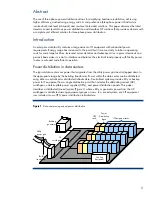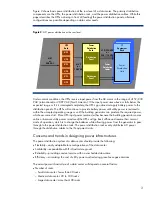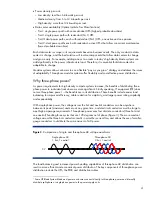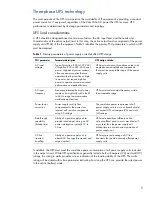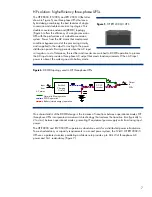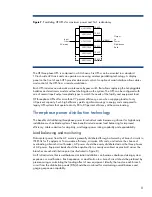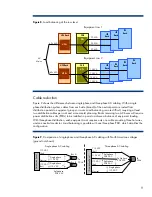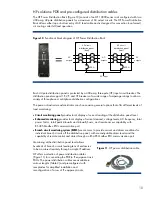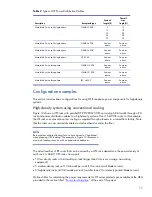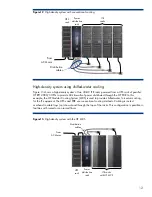
Figure 7
. Paralleling HP UPSs for maximum power and N+1 redundancy
Input
from
AC mains
Output
to
Power
Distribution
Rack
12 kW
12 kW
12 kW
12 kW
60 kW
HP RP12000
HP RP12000
HP RP12000
HP RP12000
HP RP12000
HP RP12000
12 kW
12 kW
The HP three-phase UPS is contained in a 6U chassis. Six UPSs can be mounted in a standard
19-inch-wide 42U rack and can operate as one using wireless paralleling technology. A display
panel on the front of each UPS provides status and control. An optional serial interface allows status
and control of the UPS from a remote workstation.
Each UPS includes an automatic maintenance bypass switch that allows replacing the hot-pluggable
batteries and electronics module without shutting down the system. The UPS can be configured with
one of several input/output receptacle types to match the needs of the facility and equipment load.
HP three-phase UPSs offer more than
97 percent efficiency, even when supplying loads of only
40 percent capacity. Such high efficiency yields significant savings in energy costs compared to
legacy UPS systems that operate at only 80 to 85 percent efficiency at the same loading.
Three-phase power distribution technology
The benefits of distributing three-phase power to individual racks become significant for high-density
installations such as blade systems. These benefits include easier load balancing for improved
efficiency, cable reduction for simplicity, and larger power rating capability and expandability.
Load balancing and monitoring
Data center power from the AC mains is generally distributed through a hierarchy of branch circuits to
ITE PSUs for IT equipment. To maximize efficiency, minimize kVA costs, and reduce the chance of
overloading a branch circuit breaker, AC power should be evenly distributed across the three phases
of AC power. Equipment loads should be equalized (or as nearly equalized as practical) across the
branches at each distribution point (as illustrated in Figure 8).
An IT infrastructure that is well-balanced at initial installation can become unbalanced during system
expansion or modification. Each expansion or modification to a branch circuit should be prefaced by
pre-measuring or calculating the loading affect of new equipment. Ideally, the load on each branch
circuit from the distribution panels (DPs) should be monitored for maintaining overall balance and
gauging expansion capability.
8


